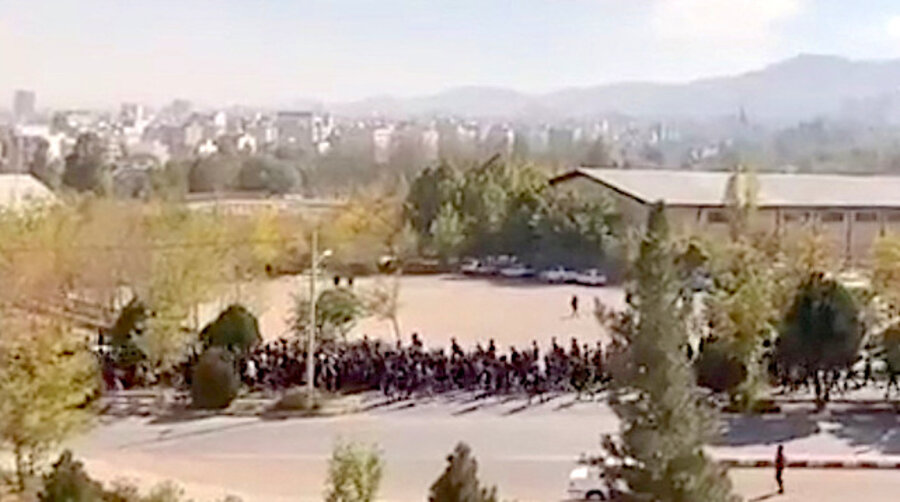In Iran’s protests, a hidden message made clear
Loading...
Amazingly, the protests in Iran, now the longest-running against one-man rule by a cleric, have been largely leaderless. Demonstrators have united around anger (over dress codes), slogans (“Woman, Life, Freedom”), and shared agony over poverty and inflation. The leaderless quality, however, points to a largely unspoken theme: a desire for equality.
If anyone in Iran is capable of making that point, it would be the spiritual leader of Iran’s largest religious minority, Sunni Muslims, who have long suffered under a Shiite-dominated regime. On Nov. 4, the most prominent Sunni cleric, Mowlavi Abdolhamid Esmailzehi, called for an immediate referendum to “change policies based on the wishes of the people.”
It was the highest-level challenge yet to the regime – and its peculiar doctrine that the Iranian people need “guardianship” by a Shiite imam – since the protests began.
A popular figure in Iran for his decades of peaceful efforts to bring about equal rights, Mr. Abdolhamid may have been pushed to take a leadership role by what is considered the largest massacre during the current protests. On Sept. 30, as many as 90 peaceful demonstrators were killed by security forces after Sunni prayers in the city of Zahedan, home to Mr. Abdolhamid.
“You cannot push back a nation that has been protesting on the streets for the past 50 days by killing, imprisoning, and beating them,” he said.
Those who wrote the Islamic Republic’s constitution – which enshrines absolute rule for Shiite leaders and the Shiite faith – were another generation, he said. “Today, there is a new generation ... it’s a different world.” This new world, he says, would not disrespect and humiliate women over not wearing a head scarf.
For his comments, Mr. Abdolhamid was warned by the powerful Islamic Revolutionary Guards Corps not to agitate the youth or it “may cost you dearly.”
He may now make a tactical retreat into his mosque and teaching institutions. But in his leadership, he made the point to the protesters – who range from merchants to students to oil workers – that there is not a natural basis for inequality in Iran. Leaderless protests prove the point.







